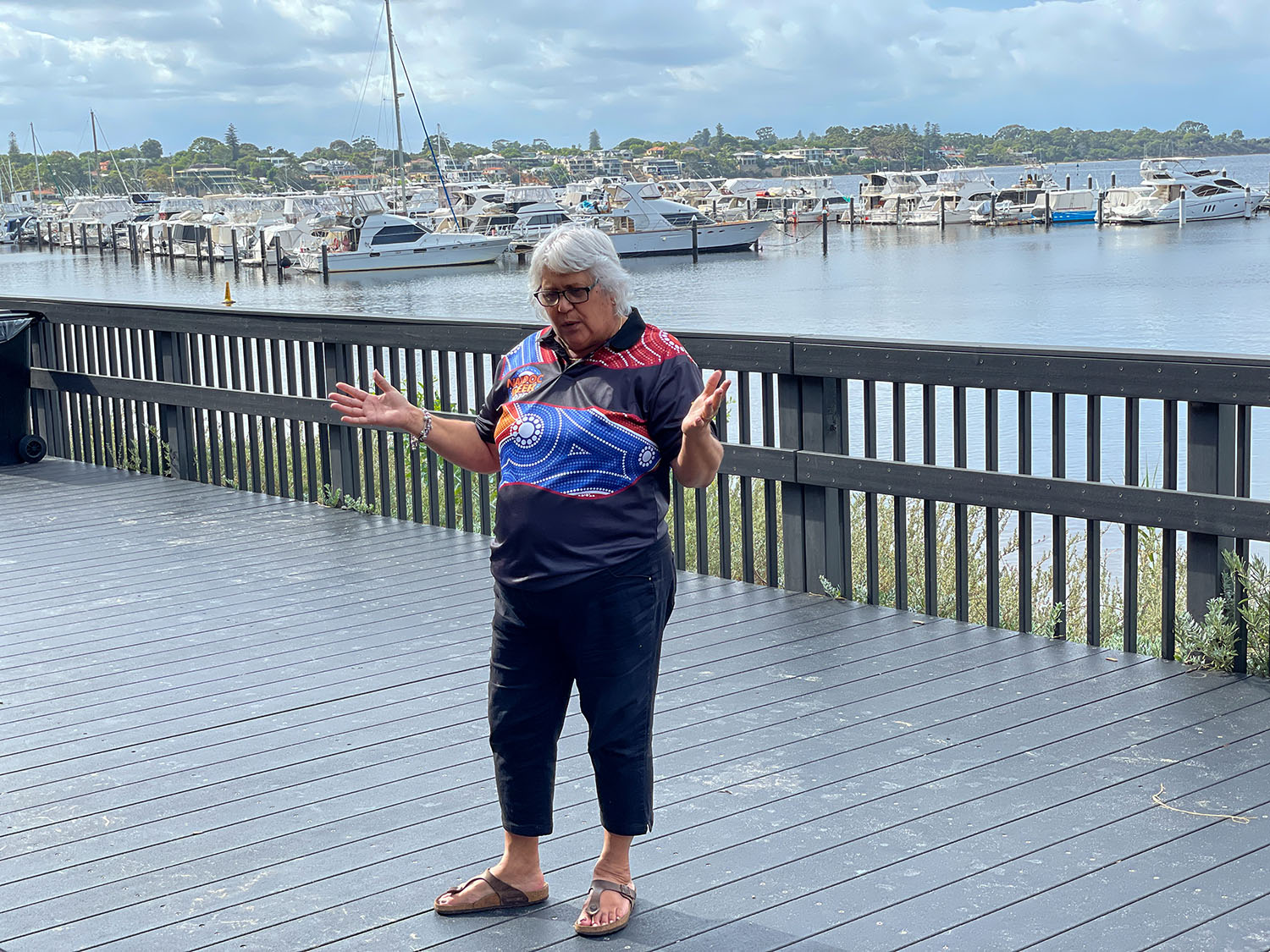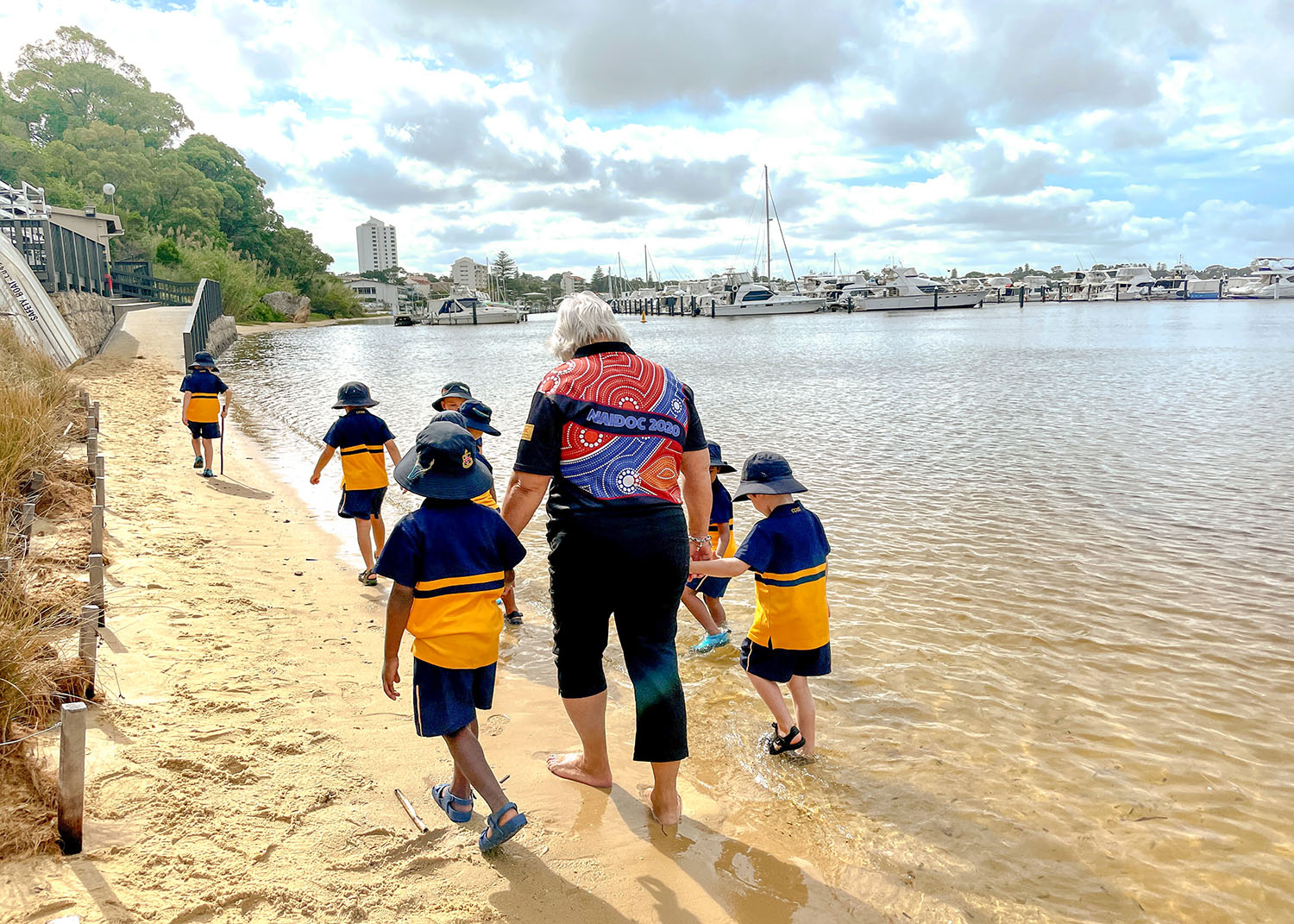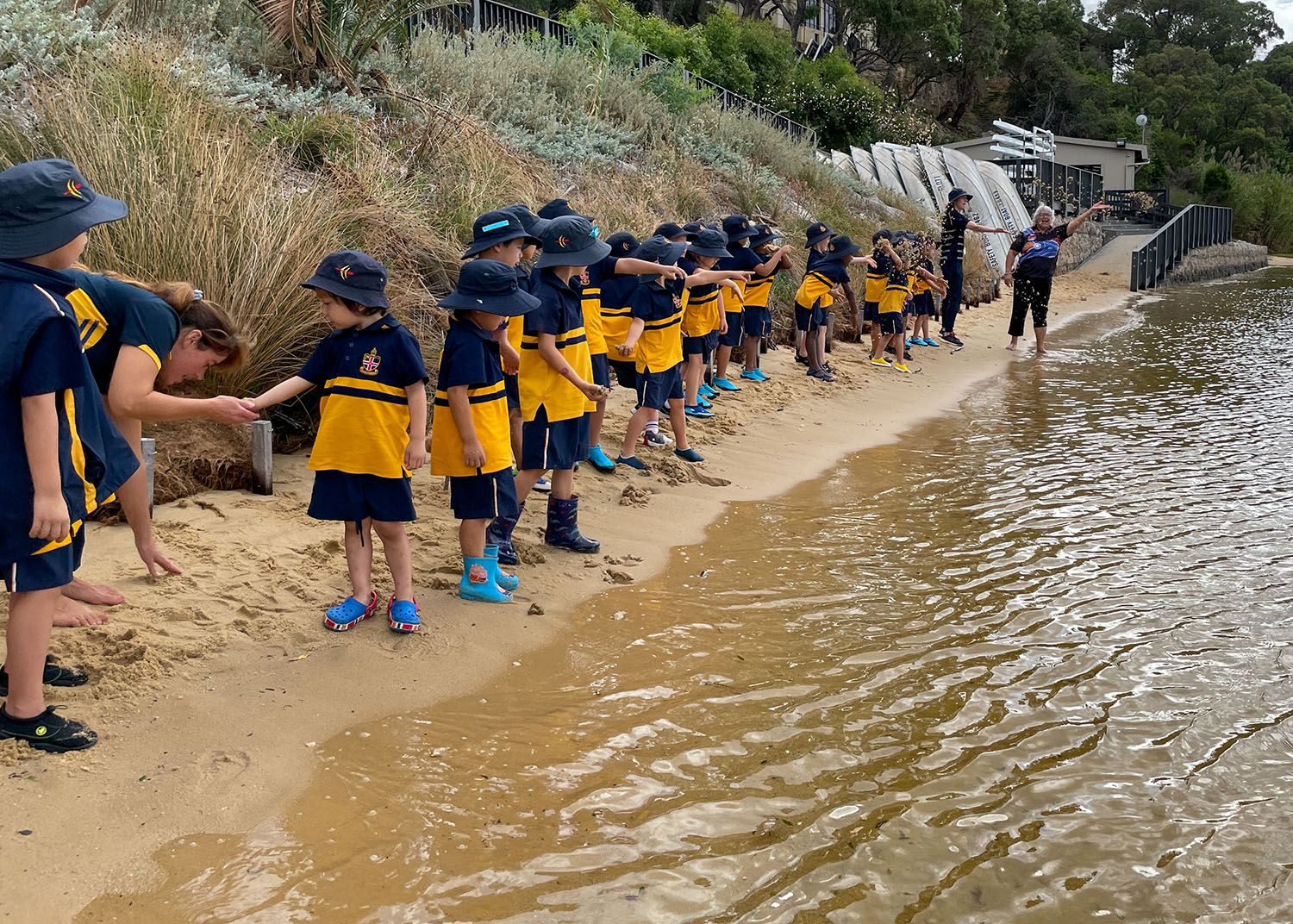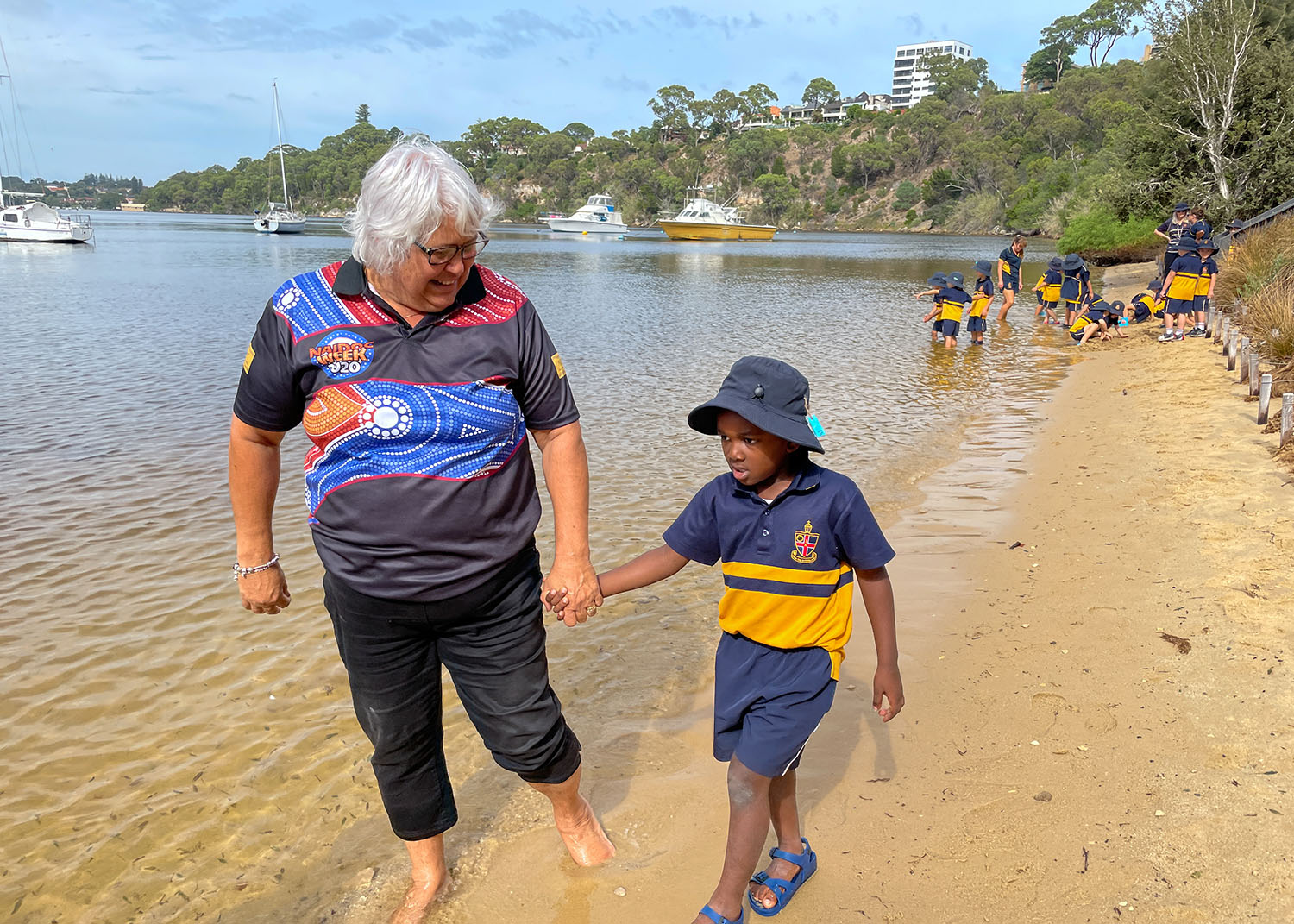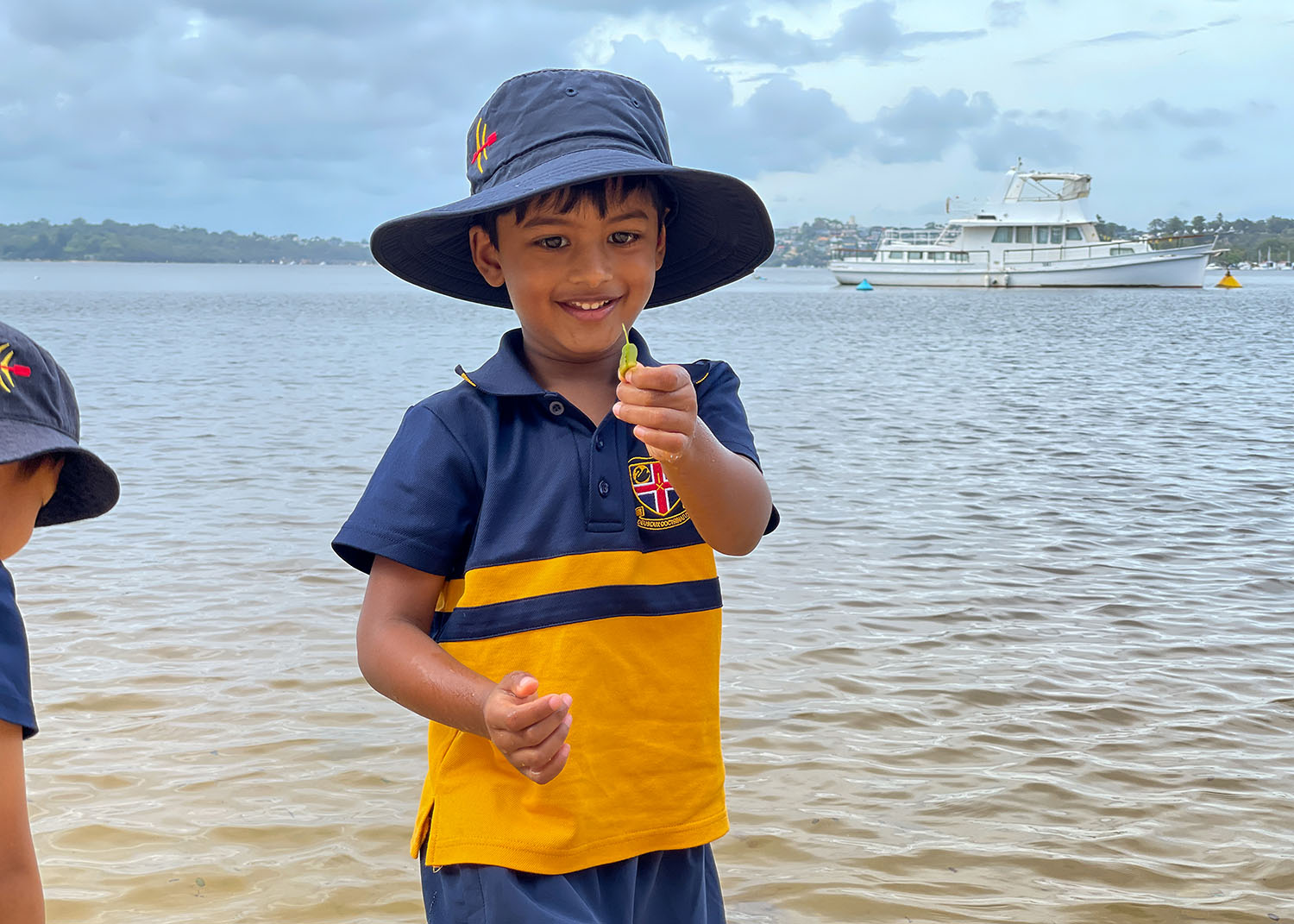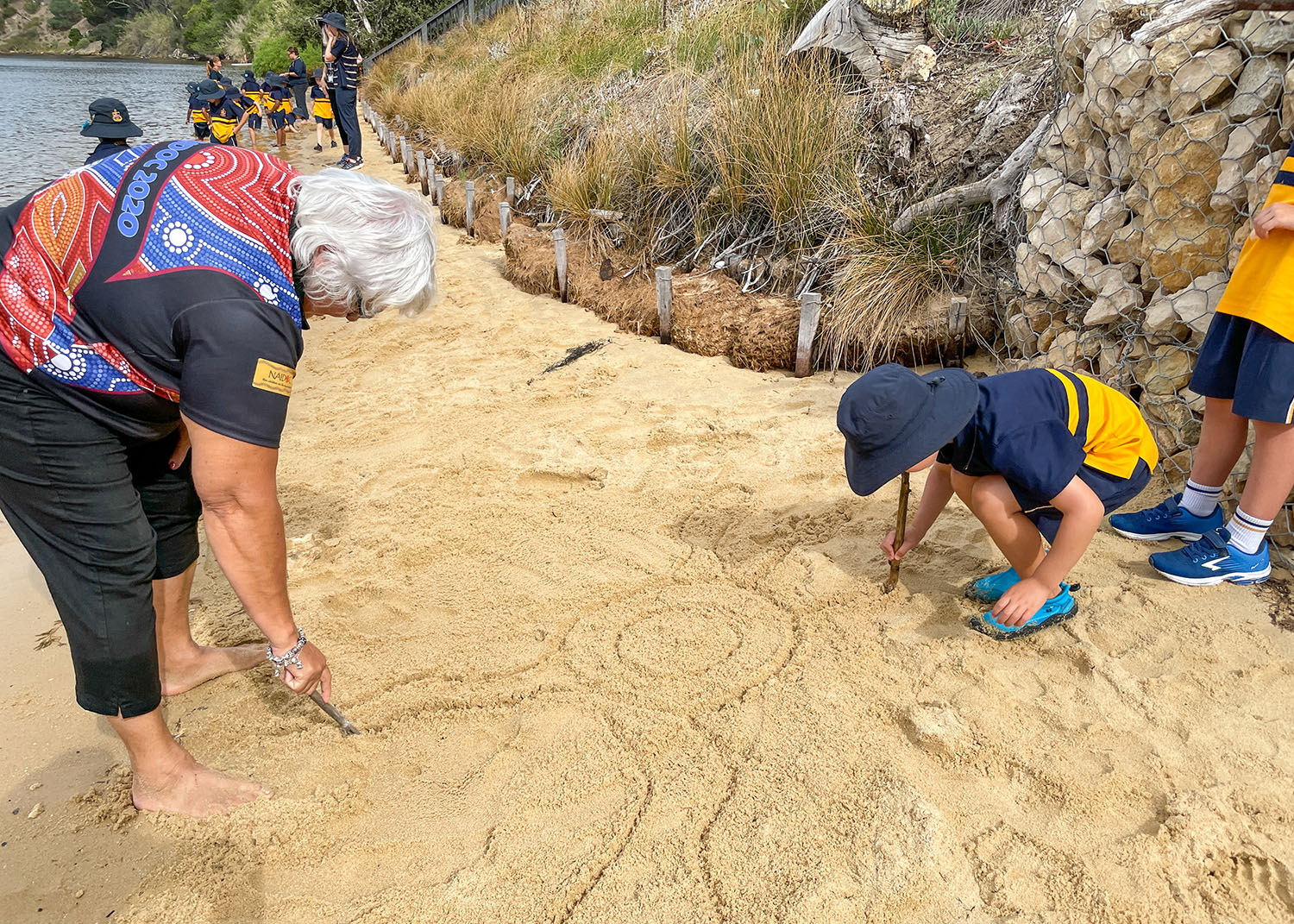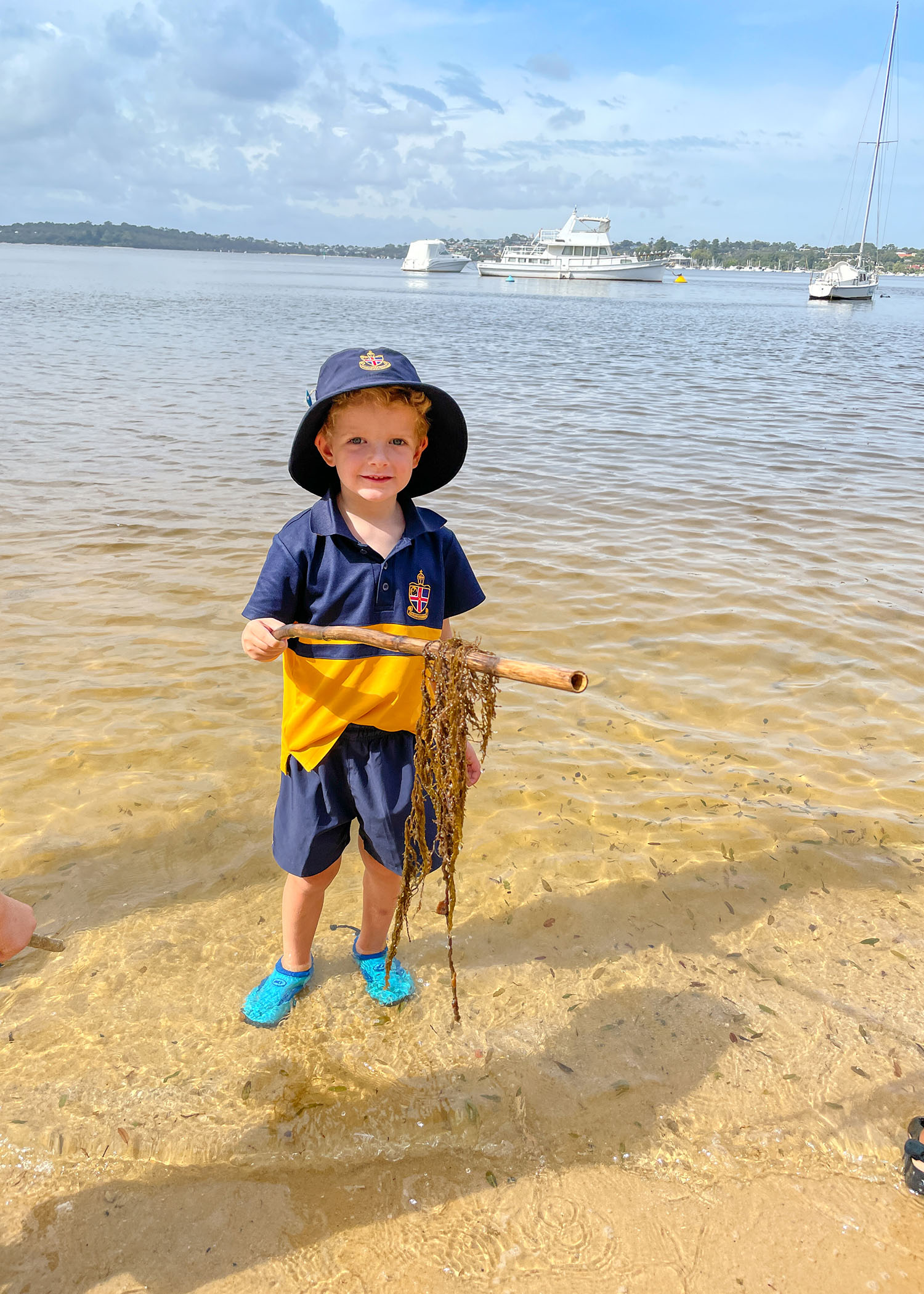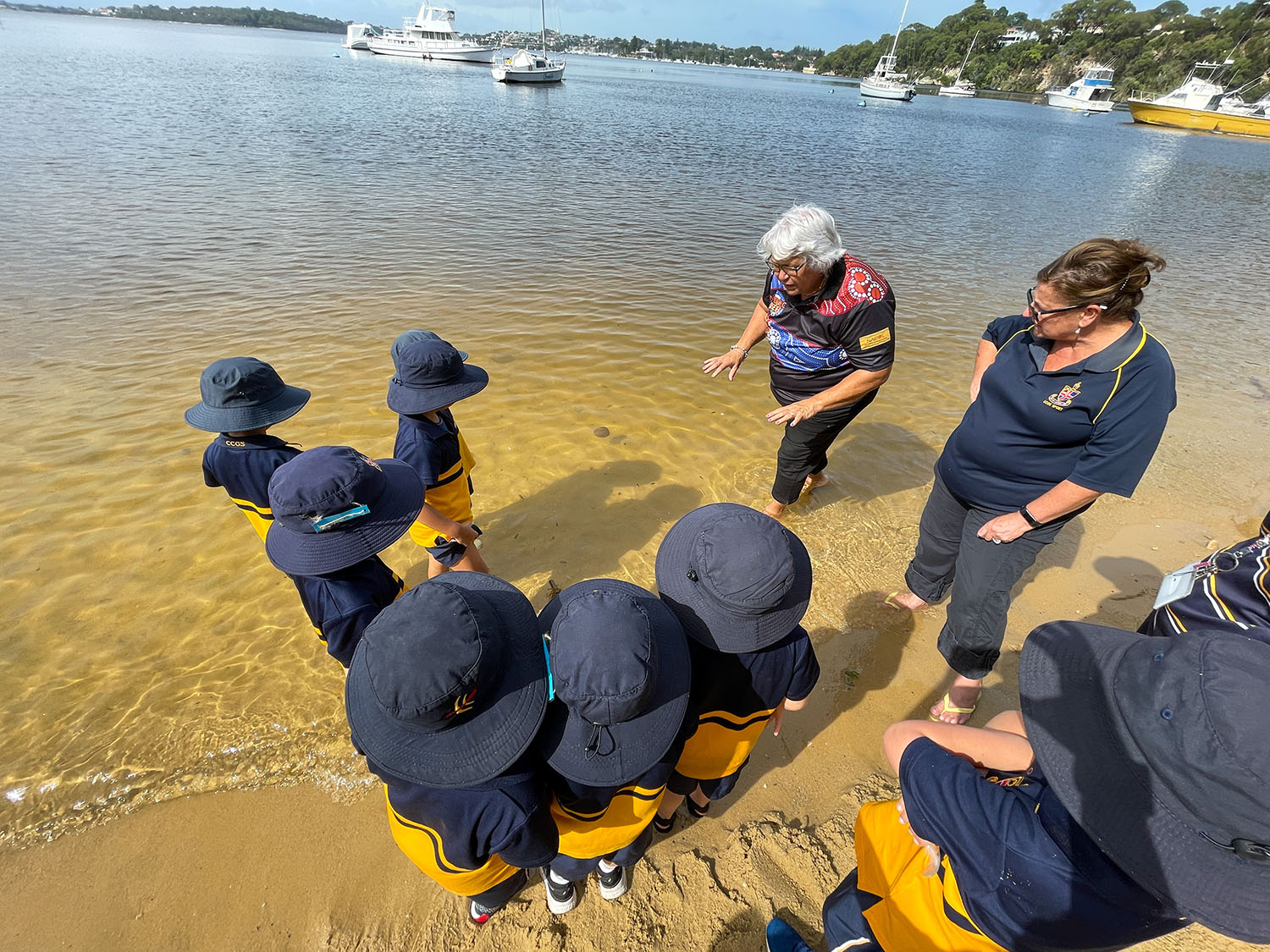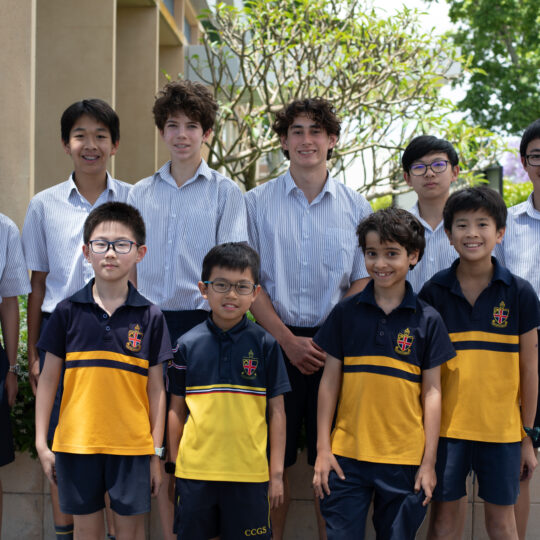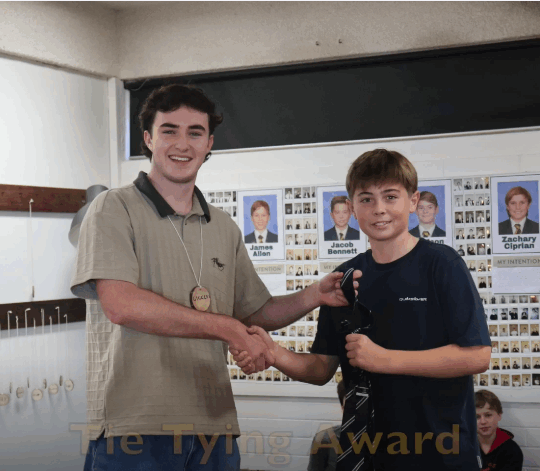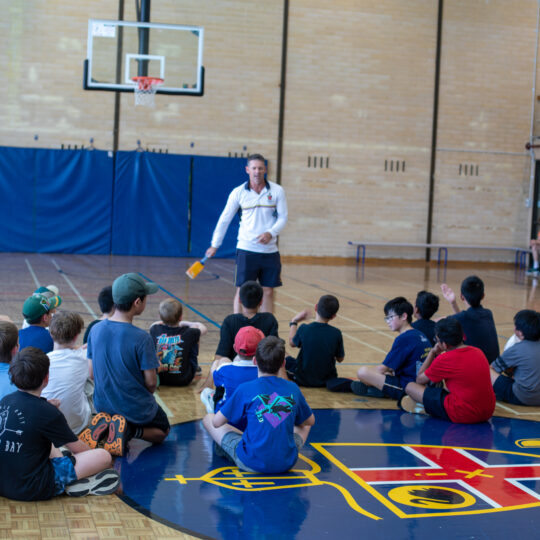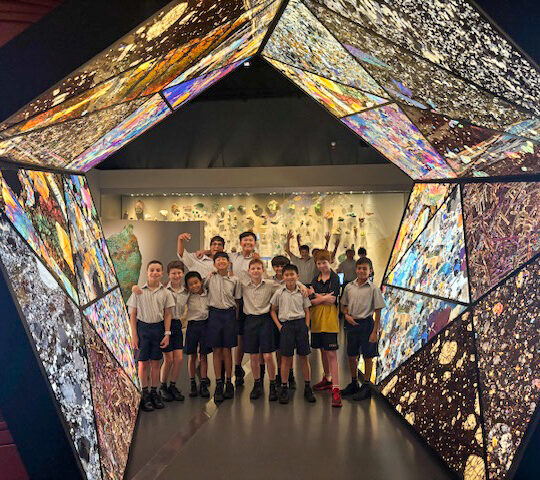Pre-Primary boys build their connection to the river
Published on: 17 March 2021
Last Thursday the boys in Pre-Primary were joined by Aboriginal Elder, Roni Forrest on their weekly visit to the river. Whilst they explored together Ms Forrest shared the story of how the Derbarl Yerrigan (Swan River) was created and helped them to develop a deeper understanding of our connection to the river.
Ms Forrest, a Minang Ngadju woman from the south coast of Western Australia, has been in education for many years and recently retired from her role as a coordinator of Future Footprints, a program supporting rural and remote Indigenous boarding students.
Ms Forrest showed the boys how to show their respects to the Wagyl (Rainbow Serpent who created the river). They sat on the sand to connect to the earth and used their senses to look, listen, feel, taste and experience the river space. Once they were tuned in and feeling connected, Ms Forrest showed them how to pay their respects to the river and let the spirits know they are friends. The boys each took a handful of sand and lined up along the waters edge and together threw the sand into the water as a gift to the river, speaking the words “Kaya Kwop Wirrin” (hello good spirits) as they did so.
“We threw the sand in the river and said ‘hello good spirits’ to the river and to the Aboriginal people, because they are the first ones who came here.” – Hugo (PPSM)
Ms Forrest’s visit represents the beginning of integrated learning in Humanities and Social Science and Talk for Writing, where the boys will learn the oral story of how the Derbarl Yerrigan was created. They will use this to explore our river space, who uses it and why, who it belongs to and how they can care for and respect the space.
Pre-Primary teacher Ms Stacey McKenzie indicated that this would become a consistent part of the boys’ education “We plan to practice and build on this each time we visit the river, as we learn more about the space. The goal is to have something we can say and do each time we visit to allow the boys to connect to the space and show our respect to its history and meaning to others.”

